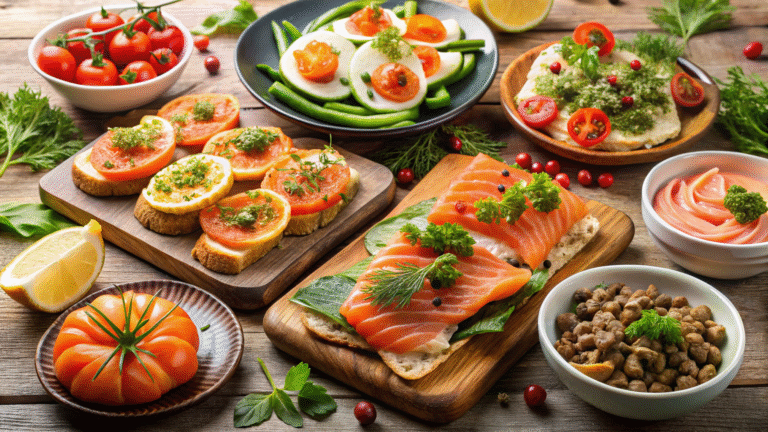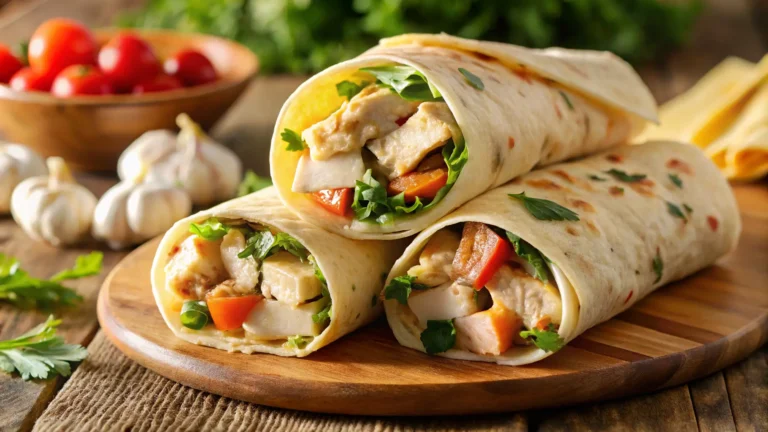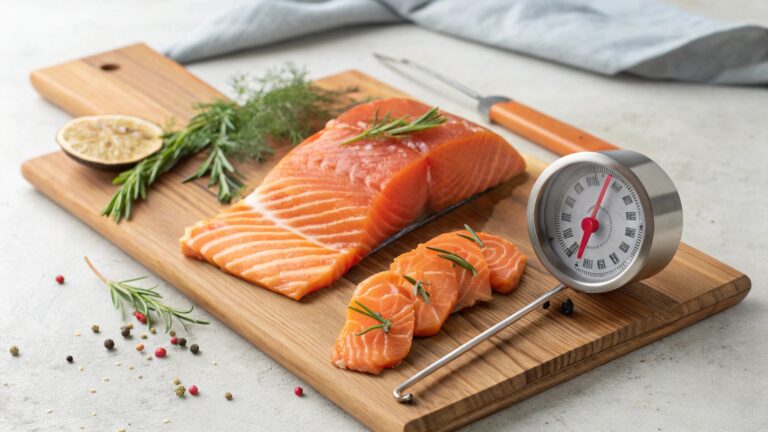Smoked Salmon Internal Temp: How to Hit 145°F Perfectly

Ever pulled a piece of salmon from the smoker only to find it dry, tough, or worse – potentially unsafe to eat? Understanding smoked salmon internal temp is the secret weapon that transforms an ordinary dish into a culinary masterpiece. My journey with smoked salmon began in my grandmother’s kitchen, where precision and passion created seafood that melted in your mouth.
Getting the smoked salmon temperature just right isn’t just about safety – it’s about unlocking incredible flavor and texture. Whether you’re a home cook or aspiring chef, mastering the nuances of internal temperature can elevate your salmon from good to absolutely phenomenal.
In this guide, I’ll share six powerful tips that will help you nail the perfect smoked salmon every single time. You’ll learn how to control temperature, ensure food safety, and create a dish that will impress even the most discerning seafood lovers.
Key Takeaways
- Internal temperature is crucial for salmon safety and quality
- Different smoking methods require different temperature approaches
- A reliable meat thermometer is your best cooking tool
- Proper preparation impacts final smoked salmon results
- Fresh, high-quality salmon makes a significant difference
Understanding Smoked Salmon Internal Temperature
Cooking smoked salmon needs precision and knowledge about internal temperatures. The right internal temperature can turn a meal into a hit or a miss. It’s important for both home cooks and chefs to understand how temperature affects safety and flavor.
To make great smoked salmon, knowing the ideal temperature is key. This ensures both safety and taste. Temperature is crucial for two main things:
- Eliminating harmful bacteria
- Achieving perfect texture and flavor
- Preserving nutritional quality
What is the Ideal Internal Temp for Smoked Salmon?
The best internal temperature for smoked salmon depends on the smoking method. Cold-smoked and hot-smoked salmon need different temperatures. For hot-smoked salmon, aim for 145°F to 150°F. This keeps it safe and moist.
| Smoking Method | Ideal Internal Temperature | Safety Level |
|---|---|---|
| Hot-Smoked Salmon | 145°F – 150°F | High |
| Cold-Smoked Salmon | 90°F – 120°F | Moderate |
Why Internal Temperature Matters for Safety and Flavor
Checking the internal temperature is more than just food safety. It’s also about keeping the salmon’s texture and flavor. The right temperature ensures your smoked salmon is safe and tastes amazing.
Types of Smoked Salmon
Not all smoked salmon is the same. Knowing the different smoking methods can make your meals better. It helps you pick the right fish for your dish.
Cold-Smoked vs. Hot-Smoked: Key Differences
Cold-smoked and hot-smoked salmon are different. They have different temperatures and ways of making them. Each one tastes and feels different, pleasing different tastes.
- Cold-Smoked Salmon
- Temperature range: 70-90°F
- Silky, translucent texture
- Typically cured before smoking
- Popular in classic lox and bagel presentations
- Hot-Smoked Salmon
- Temperature range: 120-180°F
- Flaky, cooked-through texture
- Firmer consistency
- Intense smoky flavor
Choosing the Right Type for Your Dish
What temperature you cook your salmon at depends on what you want to make. Cold-smoked is great for light dishes. Hot-smoked is better for hearty meals.
| Dish Type | Recommended Salmon Style |
|---|---|
| Bagel Topping | Cold-Smoked |
| Pasta Ingredient | Hot-Smoked |
| Salad Protein | Either Style |
| Quiche Filling | Hot-Smoked |
Choosing smoked salmon is about what you like, what your recipe needs, and how strong you want the flavor. Try both to find your favorite!
Recommended Internal Temperatures
Getting the perfect smoked salmon internal temp is key for safety and taste. Knowing the right temperature can make your salmon truly special.
Safe Minimum Temperature for Smoked Salmon
Food safety is top priority when smoking salmon. The USDA says to heat fish to at least 145°F (63°C). This ensures harmful bacteria are killed, keeping you safe from illness.
- Use a reliable meat thermometer to check the smoked salmon internal temp
- Insert the thermometer into the thickest part of the fish
- Allow the salmon to rest for a few minutes after cooking
Optimal Temperature for Texture and Flavor
While safety is crucial, the perfect internal temp also affects texture and taste. Different temperatures can change how the fish feels and tastes.
| Temperature Range | Texture | Flavor Profile |
|---|---|---|
| 125-135°F | Soft, delicate | Mild, subtle smoky notes |
| 135-145°F | Firm, flaky | Rich, developed smoky flavor |
| 145-155°F | Firmer, slightly dry | Intense smoky taste |
Try different temperatures to find your perfect smoked salmon. Remember, precision is key when cooking this delicate fish.
Using a Thermometer for Perfect Results
Getting the right smoked salmon temperature is key for safety and taste. A good meat thermometer makes sure your smoked salmon is always perfect. It turns cooking into a precise art, not just a guess.

Choosing the right thermometer is crucial for smoking salmon. Different thermometers have their own benefits for tracking the temperature.
Choosing the Right Type of Thermometer
For smoking salmon, you have several thermometer options:
- Instant-read Digital Thermometers: Quick and accurate readings
- Probe Thermometers: Continuous temperature monitoring during smoking
- Wireless Smart Thermometers: Remote tracking via smartphone apps
How to Properly Use a Meat Thermometer
Mastering smoked salmon doneness needs the right thermometer technique. Here’s how to get accurate temperature readings:
- Insert the thermometer probe into the thickest part of the salmon
- Avoid touching bones or the smoker’s surface
- Wait for the reading to stabilize (about 10-15 seconds)
- Check multiple spots for consistent temperature
Pro tip: Clean your thermometer between readings to prevent cross-contamination and ensure food safety.
Tips for Smoking Salmon at Home
Smoking salmon at home can turn a simple fish into a tasty treat. To master this skill, focus on the smoked salmon cooking temperature and internal temp.
Start by getting the right tools and ingredients. Good home smoking needs careful prep and temperature control.
Preparing Your Salmon for Smoking
Here’s how to pick the best salmon:
- Choose fresh, high-quality wild-caught or farm-raised salmon
- Remove pin bones using fish tweezers
- Create a dry or wet brine for enhanced flavor
- Pat salmon dry before seasoning
Brining adds moisture and flavor. A simple brine might include kosher salt, brown sugar, and herbs.
Managing Your Smoker’s Temperature
Keeping the temperature right is key for great smoked salmon. Aim for 165-175°F for safety and texture.
- Preheat smoker to consistent temperature
- Use a reliable digital thermometer
- Maintain steady heat throughout smoking process
- Avoid rapid temperature fluctuations
Pro tip: Wood selection matters! Mild woods like alder or apple complement salmon’s delicate flavor without overpowering it.
Common Mistakes to Avoid
Smoking salmon needs precision and care. Many home cooks make mistakes that affect the quality and safety of their fish. Knowing these common errors will help you get the best internal temp for smoked salmon. This way, you can make a dish that tastes like it’s from a restaurant.
To master the ideal temperature for smoked salmon, avoid these key mistakes:
Underestimating Cooking Times and Temperatures
Time and temperature are key when smoking salmon. Rushing can lead to:
- Undercooked fish that poses health risks
- Overcooked salmon with dry, tough texture
- Uneven cooking that compromises flavor
Professional chefs say to use a reliable meat thermometer to track internal temperatures. Patience is key. Let the salmon smoke evenly and reach the safe temperature of 145°F.
Ignoring Ingredient Quality
The quality of your ingredients is crucial for exceptional smoked salmon. Low-quality fish or bad smoking materials can ruin your dish:
- Choose fresh, high-grade salmon from reputable sources
- Use premium wood chips that complement salmon’s delicate flavor
- Invest in fresh, high-quality salt and seasonings
Your choice of ingredients greatly affects the taste and texture of your smoked salmon. Top chefs know that great results start with great ingredients.
Serving Suggestions for Smoked Salmon
Learning how to cook smoked salmon to the right temperature opens up a world of possibilities. Your perfectly smoked salmon can become the main attraction with the right serving techniques.
The secret to amazing smoked salmon is not just about the temperature. It’s also about creating unforgettable dining experiences.
Delicious Pairings with Smoked Salmon
Try these incredible flavor combinations to elevate your smoked salmon:
- Cream cheese on toasted bagels
- Capers and red onion garnish
- Fresh dill and lemon wedges
- Crisp white wines or champagne
Creative Ways to Serve Smoked Salmon
Try these innovative serving ideas to expand your culinary skills:
- Salmon Carpaccio: Thinly sliced with olive oil
- Smoked salmon pasta with creamy sauce
- Sushi rolls featuring smoked salmon
- Salmon-topped salads with citrus vinaigrette
Pro tip: Always let your smoked salmon rest after cooking to ensure maximum flavor and optimal texture.
Your smoked salmon internal temp is not just about safety. It’s about making dishes that impress your guests and excite their taste buds.
Storing Leftover Smoked Salmon
Storing leftover smoked salmon right is key to keeping it fresh and safe. Knowing how to refrigerate and freeze it helps keep its great taste and quality.

After enjoying your smoked salmon, it’s important to store it well. This way, you can keep its flavor and quality for longer. The way the salmon is smoked affects how long it stays good.
Best Practices for Refrigeration
Here are the top tips for refrigerating smoked salmon:
- Wrap the salmon tightly in plastic wrap or place in an airtight container
- Store at temperatures below 40°F (4°C)
- Consume within 3-5 days for optimal freshness
- Keep the salmon away from other strong-smelling foods
How to Freeze Smoked Salmon Properly
Freezing is a great way to keep smoked salmon longer. Here’s how to freeze it correctly:
- Wrap the salmon in multiple layers of plastic wrap
- Place in a freezer-safe bag, removing as much air as possible
- Label the package with the date of freezing
- Store at 0°F (-18°C) or lower
- Use within 2-3 months for best quality
Pro tip: Always thaw frozen smoked salmon in the fridge. This keeps its texture and prevents bacteria from growing. Paying attention to how it’s smoked helps it last longer and taste better.
Troubleshooting Common Issues
Smoking salmon needs precision, even for skilled home cooks. Knowing how to fix problems can save your dish and boost your confidence.
When smoking salmon, keeping an eye on the internal temp is key. It ensures the right texture and flavor. But, mistakes can happen. Knowing how to fix them is crucial.
Dealing with Overcooked Salmon
Overcooked salmon can be a bummer. But, there are ways to make it work:
- Turn overcooked salmon into a creamy spread by mixing it with cream cheese
- Make salmon cakes or patties to hide the dryness
- Add chopped salmon to salads for extra protein
- Use it in pasta dishes with a rich sauce to add moisture
Fixing Dry or Too Salty Smoked Salmon
Controlling the smoking salmon internal temp helps avoid dryness. But, sometimes you need quick fixes:
- Gently reheat salmon with a splash of olive oil
- Pair it with creamy sauces to balance the saltiness
- Soak it briefly in milk to reduce saltiness
- Use it in dishes with moist ingredients
Perfect smoked salmon comes from patience and practice. By understanding the cooking temperature and learning how to fix mistakes, you’ll become a pro in no time.
Final Thoughts on Smoked Salmon Internal Temp
Mastering smoked salmon is all about temperature control. You’ve learned that the best internal temp is key for safety and taste. Whether you’re cooking at home or in a kitchen, paying attention to temperature can make a big difference.
Getting better at smoking salmon takes practice and patience. Each time, you’ll get better at reading temperatures and how they change the fish’s taste and texture. Remember, different smoking methods need slightly different temperatures, but always keep an eye on the internal temperature.
Key Points for Perfectly Cooked Salmon
Temperature control is crucial for smoking salmon. Use a good digital thermometer and follow safe minimum temperatures. Don’t be afraid to make small changes. Your taste is the most important guide.
Encouragement to Experiment with Your Cooking
Smoking salmon is both a science and an art. Start with guidelines, but feel free to experiment. Try different wood chips, adjust smoking times, and explore temperature ranges. With each try, you’ll get closer to creating delicious smoked salmon that will wow everyone.







